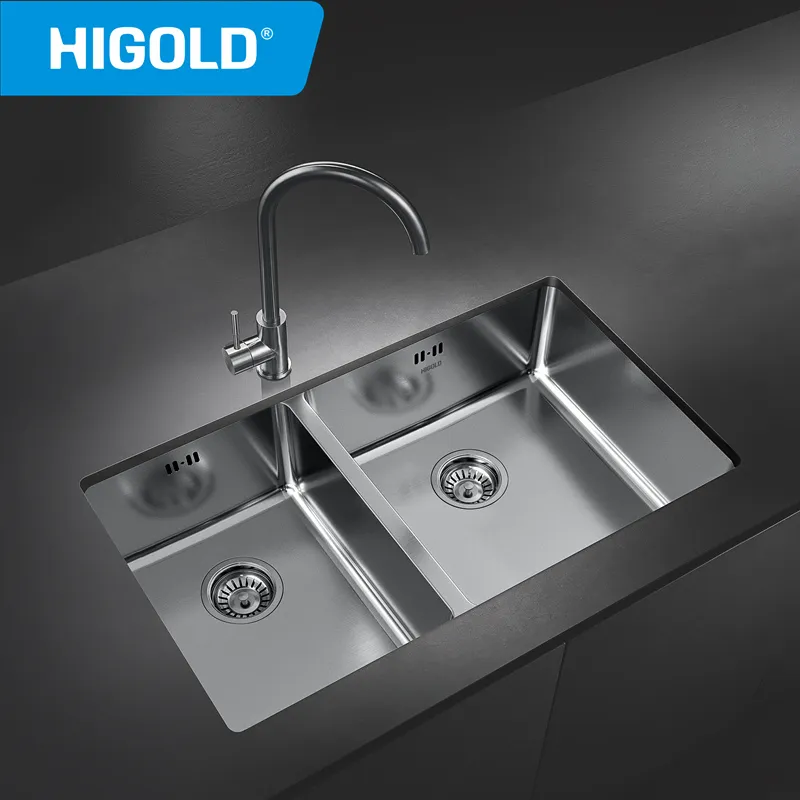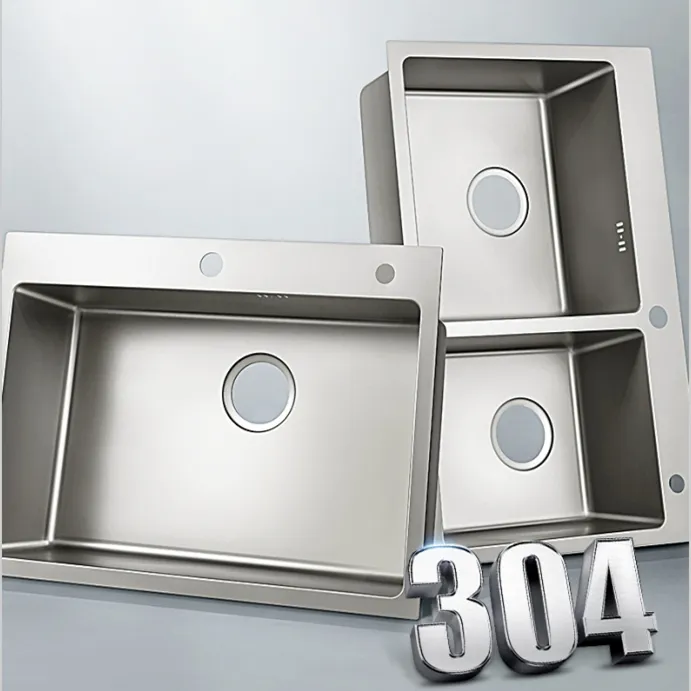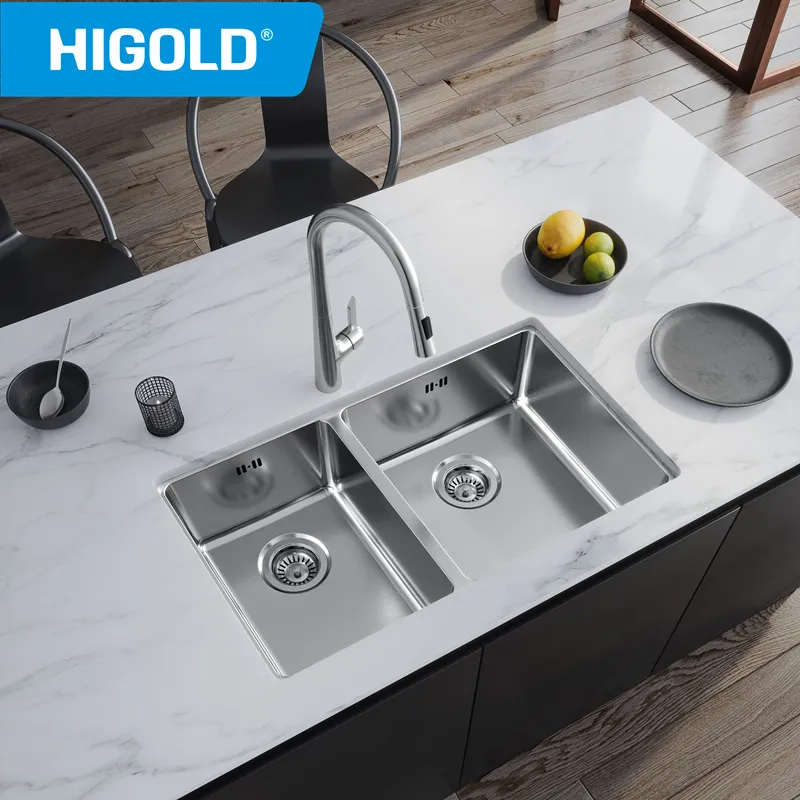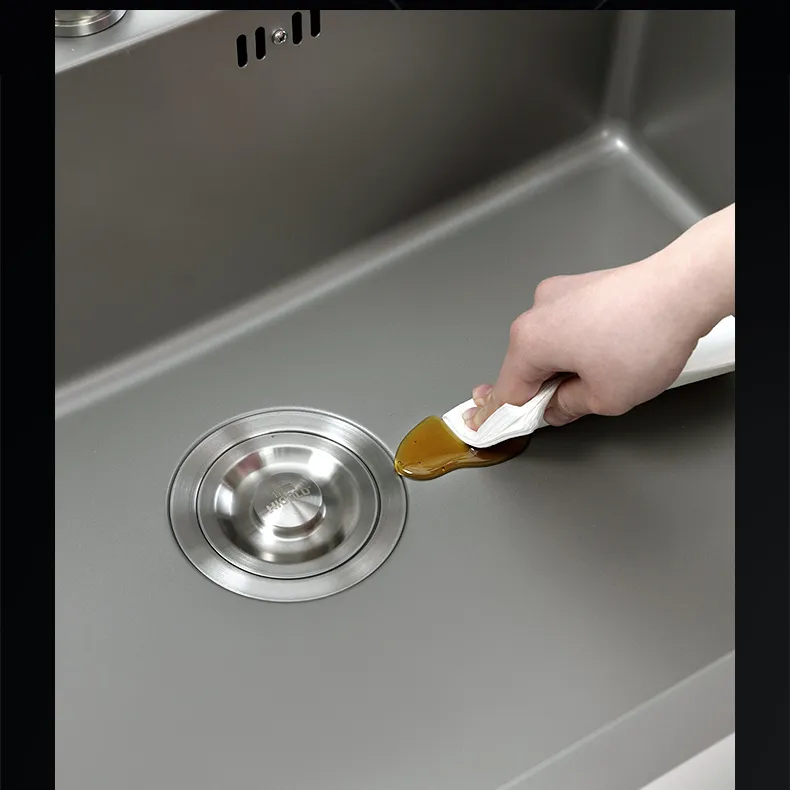In modern kitchens, stainless steel sinks have become a popular choice due to their durability, easy cleaning and aesthetic properties. However, there are many types of stainless steel sinks on the market, and the quality grades of stainless steel vary, which makes it difficult for consumers to choose. So, what is the best grade of stainless steel for kitchen sinks?
In this article, we will delve into the relevant knowledge of stainless steel grades and analyze the impact of different grades on kitchen sink performance to help consumers make an informed choice.

What grades of stainless steel are there?
Stainless steel is an alloy composed of elements such as iron, chromium, and nickel. The proportions of these components are adjusted to improve its corrosion resistance, strength, and processing performance. The grade of stainless steel usually refers to the classification standards of its chemical composition and physical properties. Common classification methods include ASTM standards in the United States, European standards, and Japanese standards. In the field of kitchen sinks, the most widely used is austenitic stainless steel, mainly including grades 304 and 316.
1. 304 stainless steel
304 stainless steel is the most commonly used material for kitchen sinks. Its main components are 18% chromium and 8% nickel, so it is also called 18/8 stainless steel. This grade of stainless steel has excellent corrosion resistance, high strength and good machinability, and is widely used in food processing, medical equipment and architectural decoration.
2. 316 stainless steel
316 stainless steel is based on 304 stainless steel, with 2-3% molybdenum added to further improve corrosion resistance, especially in chloride environments. 316 stainless steel is commonly used in marine equipment, chemical equipment and high-end kitchen supplies.
3. 201 stainless steel
201 stainless steel is an economical alternative to 304. It has a lower nickel content and a higher manganese content, so it is cheaper. However, this stainless steel has slightly lower corrosion resistance and strength than 304 and is more susceptible to environmental effects.

What effect does the stainless steel grade have on the life of the kitchen sink?
The stainless steel grade directly determines the performance and life of the kitchen sink. From the perspective of corrosion resistance, durability, processing performance and cost, the following is the performance of different grades of stainless steel in kitchen sinks:
1. Corrosion resistance
·304 stainless steel kitchen sink: Because it contains 18% chromium and 8% nickel, the 304 stainless steel kitchen sink has excellent corrosion resistance. It can well resist the erosion of acids, alkalis, salts and moisture in the kitchen environment, is not easy to rust, and is a common material for kitchen sinks.
·316 stainless steel kitchen sink: On the basis of 304, the 316 stainless steel kitchen sink adds molybdenum elements to further enhance the resistance to chlorides and salt spray. Therefore, if the kitchen environment is often exposed to seafood or water sources with high salt content, 316 stainless steel will be a better choice.
·201 stainless steel kitchen sink: Due to the lower nickel content, the 201 stainless steel kitchen sink has worse corrosion resistance than 304, is more likely to rust in humid or acidic and alkaline environments, and is not suitable for long-term use in high-humidity kitchen environments.
2. Durability
The durability of stainless steel kitchen sinks mainly depends on the strength and hardness of stainless steel.
·304 stainless steel kitchen sinks have moderate hardness, are not easy to deform, and can withstand the impact and pressure of daily kitchen use.
·316 stainless steel kitchen sinks have stronger strength and toughness due to the addition of molybdenum, and are suitable for kitchen scenes that require high strength and pressure resistance.
·Although the price of 201 stainless steel kitchen sinks is low, their strength and toughness are slightly inferior, and cracks or deformation may occur after long-term use.
3. Machinability
Stainless steel sinks are usually made of cold-rolled steel plates, which are made by die stamping or welding. 304 and 316 stainless steel kitchen sinks can be processed into various complex shapes due to their good ductility, while 201 stainless steel is prone to cracks during processing, resulting in the quality of the finished product being less stable than 304 and 316.
4. Aesthetics
The surface treatment of stainless steel sinks is an important factor in determining the appearance. 304 and 316 stainless steel kitchen sinks can present a uniform gloss through processes such as wire drawing and polishing, and the surface is flat and not easy to scratch. 201 stainless steel kitchen sinks are softer and prone to uneven textures, which makes the visual effect slightly inferior.
5. Cost
Due to the high nickel content in 304 and 316 stainless steel kitchen sinks, their cost is much higher than 201 stainless steel sinks. 316 is more expensive than 304 due to the addition of molybdenum. For families with limited budgets, 201 may be an affordable choice, but for consumers who pursue high quality and long life, 304 and 316 stainless steel are undoubtedly better choices.

Best stainless steel grade for kitchen sinks: comprehensive advantages of 304
Among the various stainless steel grades, 304 is widely regarded as the best choice for kitchen sinks. This is because 304 stainless steel kitchen sinks achieve a good balance between corrosion resistance, durability, cost and aesthetics, and can meet the needs of most home kitchens.
1. Advantages of 304
·Durable: 304 stainless steel sinks have good strength and toughness, and can withstand the wear and tear of daily kitchen use.
· Strong corrosion resistance: Whether it is acid, alkali or salt, 304 stainless steel can maintain good resistance, ensuring that the sink will not rust for a long time.
· High cost performance: Compared with 316 stainless steel sinks, 304 is more economical and its performance is better than 201 stainless steel sinks, so it has become the first choice for most consumers.
· Easy to clean: 304 stainless steel sinks have a smooth surface, stains are not easy to adhere, and daily cleaning is very convenient.
2. Applicable scenarios of 316
Although 304 can already meet most kitchen needs, 316 stainless steel kitchen sinks may be a better choice in some special scenarios. For example:
· Seaside or high humidity environment: 316 stainless steel kitchen sinks have stronger tolerance to chlorides and are more suitable for use in salt spray environments.
· Professional kitchens: High-end restaurants or industrial kitchens may require higher corrosion resistance and strength, and 316 will be better at this time.
3. Limitations of 201
201 stainless steel is often used in low-end sink products due to its lower cost. However, due to its poor corrosion resistance, it is easy to rust in a humid environment, affecting its appearance and service life. Therefore, it is not recommended to choose 201 stainless steel sinks as long-term kitchen equipment.

How to judge the grade of stainless steel sinks?
When consumers buy stainless steel sinks, they can judge their material grade by the following methods:
1. Check the product logo
High-quality stainless steel sinks usually indicate the material grade on the product label or instruction manual, such as "304 stainless steel" or "316 stainless steel". Make sure to buy products from regular brands to avoid being impersonated by low-grade stainless steel.
2. Use magnetic test
304 and 316 stainless steel have weak magnetic response due to their austenitic structure, while 201 stainless steel has obvious magnetism due to its high iron content. Consumers can use a magnet to test the surface of the sink. Weak magnetism or no magnetism indicates that the product is more likely to be 304 or 316.
3. Observe the surface quality
High-quality stainless steel sinks have a smooth surface, uniform texture, and natural silver-white color, while inferior stainless steel sinks may appear dark in color or uneven in surface.
4. Consult the Merchant
When buying a stainless steel sink, ask the merchant directly about the material grade of the product and request relevant supporting documents.
What kinds of buyers typically work with Higold?
Higold serves a wide range of clients, including importers, distributors, brand owners, retailers, contractors, and eCommerce platforms. The company’s ability to fulfill small MOQ trial orders as well as large-volume container shipments makes it a versatile partner for businesses of all sizes looking to source kitchenware from China.
Higold sert une clientèle diversifiée, notamment des importateurs, des distributeurs, des propriétaires de marques, des détaillants, des entrepreneurs et des plateformes de commerce électronique. Sa capacité à répondre à des commandes d'essai de faible quantité minimale de commande (MOQ) ainsi qu'à des expéditions de conteneurs de grande envergure en fait un partenaire polyvalent pour les entreprises de toutes tailles souhaitant s'approvisionner en ustensiles de cuisine en Chine.

